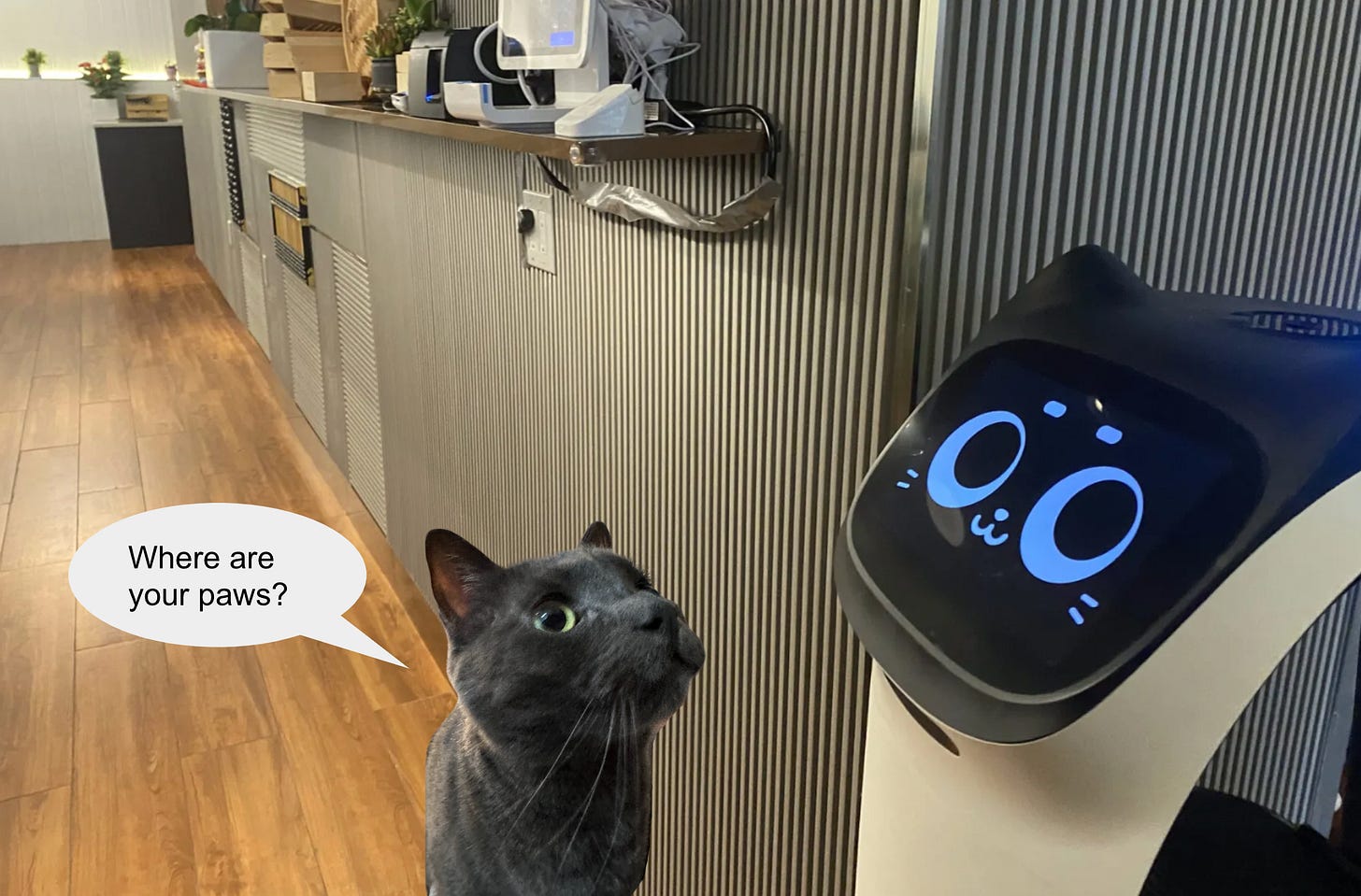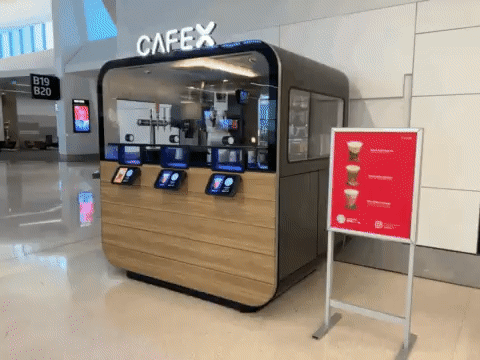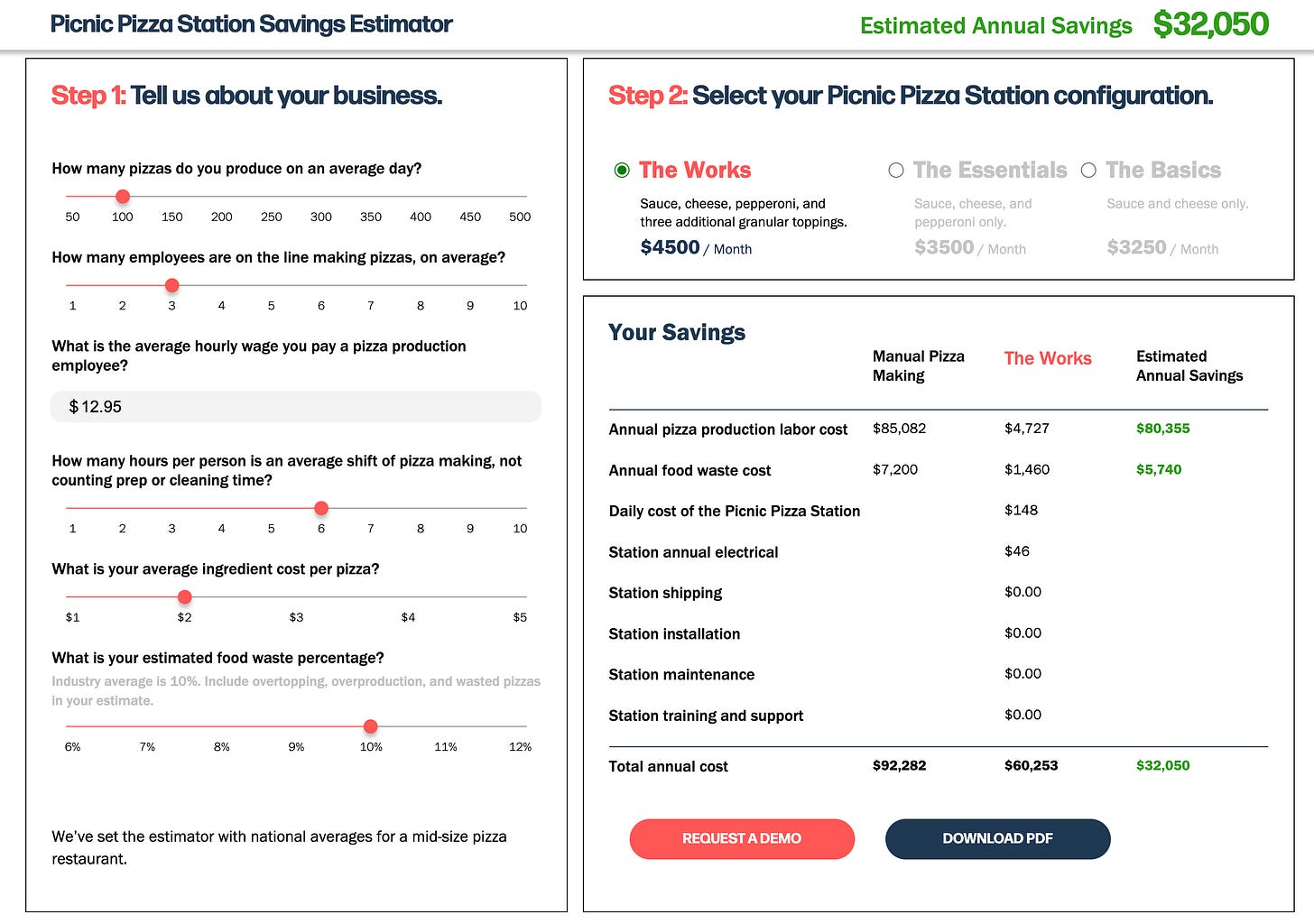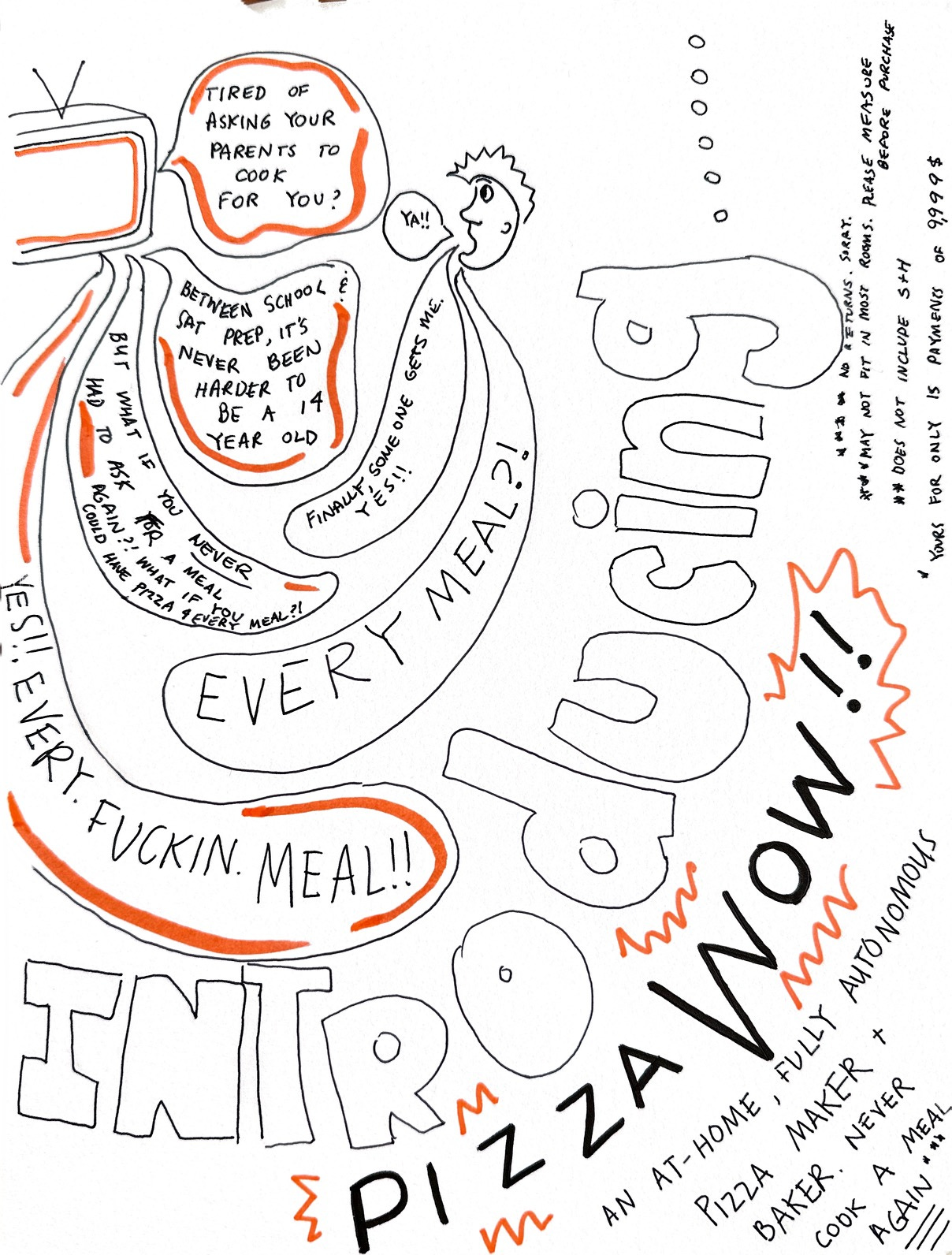Edition 11: Food Service Robots (Part 2)
3500 slices of pizza will be sold by the time you're done reading
Happy Super Bowl Sunday for those who are celebrating. For those who aren’t, happy Sunday! Sliding into your inbox an hour before the game was risky, but I’ve been eager to drop this edition!!! Much like last week, I couldn’t resist another deep dive into the world of robots. Maybe it’s the mechanical engineer in me? Maybe it’s my obsession with food experiences? Maybe it’s Maybelline?
ITK is currently fully reader supported. Every subscription lets me hang out in this food research playground a bit longer. Am I doing this promotion thing right??
A quick recap on Edition 10
In Edition 10 we unpacked the world of last mile delivery robots. They’re robots designed to bring food from point A to point B, to varying distances and accuracy. All without a human. Pretty neat (when it works). Some look like trays of food on wheels and others are straight up mini cars with no windows. Some look kinda like cats and they deliver you dim sum in NYC:

I’m tempted to host our first NYC ITK meet up here. Dim sum on DPo!?
But wait, there’s more!! Robots galore!!
Beyond my marathon into food service robotics, I’ve been thinking a lot about informercials. Those punchy, cringy TV ads that convinced you to buy the most eccentric of things. I miss them. I want to bring them back. One day I’ll find a producer and bring my ideas to life. For now, drawing will have to do. More on that later.
Today, we’ll be learning all about the robots that cook for us. And as you might imagine, that world goes deep. Robots are serving up coffee in airports (CafeX). Robots are flipping burgers at fast food joints. They’re even creating robotripping robots. It’s like a tamagachi, but you feed it digital robitussin.*
Let’s dig in!!
Say hello to my little friend 🦾
There’s no denying we’ve seen a ton of advancements in food automation robots, especially from a technological perspective (and a Wawaweewa factor). Most of the robotic devices are designed to automate a lot of existing manual and repetitive human processes. This can be especially valuable in fast food restaurants, for example. Check out Flippy, the robotic burger flipper and deep fryer:
For the low cost of $3k/mo you can fry 2x faster and more efficiently. They call this monthly payment model Robots as a Service (RAAS). Lol, I wish I thought of that acronym. It’s a compelling value proposition, especially when you add in the fact that it can work around the clock. But selling them isn’t so straightforward:
To install a robotic arm like this often requires retrofitting into an existing kitchen design, which is expensive and interrupts with the daily operational flow.
Once it’s installed, you need to train up your employees on how to use it. That too can be expensive and disruptive.
Robots as a Service (RAAS) business models aren’t a normal purchasing method for restaurants. Restaurants typically purchase equipment, not lease it.
So when you put it all together, it can actually be quite hard to justify the ROI for a single-use product.
But fast food and fast casual restaurants are certainly interested in robotics. Many of them are building out their own internal departments/programs/venture funds to bring these technologies to market themselves. Here are a few examples that came up on my internet voyages:
Little Caesars patented a pizza robot. Unclear what they’re doing with it.
Chipotle launched a $50 million venture fund in 2022 to invest in emerging tech. They’ve been piloting with Miso Robotics (the company that makes the robotic arm, Flippy).
DoorDash has a division called DoorDash Labs that focuses on automation and robotics for last mile delivery. But in their case, it’s unclear what scale looks like. They acquired and then ultimately shut down a company that designed Sally, the salad making robot. Seriously these names are so original.
Sweetgreen acquired Spyce technology and are launching a fully automated restaurant in 2023. I bet the robot will be called Sweetie. And Saweetie is going to advertise it.
I think corporations [although they’re slow moving] may be best positioned to scale these types of robots. They can maintain their existing restaurant operations and invest or acquire a company when its mature and high quality enough. It’s relatively low risk for them to try this out and see if it can meet their quality/consistency/efficiency standards. And if it does, they’ll take on the cost of retrofitting or rebuilding.
But as a startup, it’s a massively uphill battle. Proving out your tech is one thing, but then finding ways to scale repeatedly is incredibly tough. But if we know one thing about startups it’s that they’re gonna try and get creative, sans retrofitting.
Why retrofit when you can rebuild?
One robotics startup in Paris built an autonomous pizza restaurant from the ground up and really leaned into the robotic spectacle, displaying it in the open for the patrons:

Unfortunately, they couldn’t make it work and shut down in 2022 - citing an “immature French hardware startup ecosystem and a mistrust of robotics by the general public.” (Source).
I’m fascinated by the comment about mistrust of robots. As a patron who’s never dined here, I’d imagine seeing the arms do their thing is exciting the first couple of times. But does it replace or augment the highly personal, traditional dining experience? I’m not so sure.
I think there’s a certain type of magic or mystique that gets preserved when the robot is behind the scene. Either you don’t know it’s happening robotically or you’re imagining it.
Why retrofit when you can just plug and play?
So you don’t want the robot front and center? All good. And you don’t want to retrofit an appliance into your kitchen? Also cool. We got you. Enter Picnic Pizza. They’ve developed a plug and play pizza making station that can cook 130 oven-ready pizzas an hour with a single employee.
Not sure about the ROI? They spell it out for you with this handy savings estimate tool:
This was the most comprehensive take I saw on making the business case for one of these RAAS model robots. But I’m sure there are others. While this makes for a compelling business case, I also find that the robotics dialogue can be overly reductionist, especially to human workers. We are impacting lives and businesses alike. It’s a slippery slope on both sides.
Informercial Commercial Break
Look I told you I was into informercials recently. Especially ones that can turn dystopian at a moments notice. I’ll work on a part 2 to this at some point.
Why retrofit when you can create an entirely new modular kitchen?
Now we enter the big arena of players. Rather than displaying tech or selling into kitchens, they’re reimagining the concept of a kitchen entirely. They’re taking the shape of standalone pods and even vending machines. For our philosophical-yet-visual-learners, here’s a chaotic landscape:

Not listed: the handful of failed startups, including Zume Pizza (raised over $400M) and Basil Street Pizza.
Of the 7 companies listed above, 5 of them focus solely on pizza automation. The other 2 make Mediterranean style bowls (Mezli) or coffee (CafeX). I couldn’t help but wonder, why are pizza startups all rage and how they keep raising more and more venture money despite the graveyard of past pizza startups?
Some pizza automation companies raising capital cite that the pizza market itself is growing. Others cite stats about how Americans just eat a shit ton of pizza:
Americans consume around 3 billion pizzas a year, at a cost of around $46 billion annually, so it’s obvious why companies like Stellar [mobile automated pizza delivery startup] would want to grab a slice of this market. -Source
Lol, mediocre puns are my jam. Look I’m no pizza expert, if I was, you could call me Papa DPo. I do think the market size plays a big role in all the hype, but pizza, along with the other startups listed here have a few core advantages that make it interesting from an investment standpoint:
They play into the “wow” factor, without intimidating us with robotic arms. Well, except for CafeX. The rest tuck away the tech. It’s more approachable and similar to our traditional vending machine or food truck experience. Sans human.
They’re build for speed and convenience. And we love both. I blame Daddy Bezos. And the world of food delivery.
They’re relatively simple foods. Perfect for robots. They can stack and steam, but they can’t cook us duck confit. At least not yet. Pizza though? Ya, we got that.
They can win on price. Unlike a brick and mortar store with loads of employees, these companies use little human capital and physical real estate. And the ingredients are relatively inexpensive. Put that all together and you’ve got a potentially scalable model. The founder of CafeX recently twitted about their revenue:


They can go where restaurants can’t. Take for example a laundromat. Today, you’ll find vending machines in almost every single one. But what if one of those pizza machines could be placed in one? Pizza while you wait for your laundry… sounds pretty tasty. And potentially another way to monetize food.
I’m personally excited about how these modular kitchens can serve up healthier foods at a cheaper price point. Take for example, Mezli - who’s serving up fresh, chef-designed Mediterranean bowls starting at $6.99. This could be a unique approach to how we bring more optionality and deliciousness at a reasonable price point, especially in areas with limited options.
Robotics Reflection
There is a ton of ethical discourse needed in the broader food service automation space, IMO. I found myself getting fixated on the human-replacement dialogue, but is that really the right perspective? There's so much strain on the limited human capital that oftentimes it leads to even worse working conditions. For example Doordash drivers and strained restaurant staff. This radiolab episode compiled a handful of stories that shed light on the opacity and gamification baked into the driver experience.
I'm not suggesting that robots are the silver bullet. But maybe their increased utilization will force others to be more mindful about their labor culture. I’m also not suggesting that I know the answer. It’s a complex, systematic change to so much of our fundamental food fabric. ← 10 points for Ravenclaw for that alliteration.
I’d love to learn more about other people’s perspectives on the ethics around robotic automation
What We’re Cooking
We indulged in lots of goodness over the past week. Most notability, though I caught up with an old friend and we cooked up a pig feet stew. It was his grandpas comfort food. Don’t knock it til you try it!!!
We’re on the lookout for better brining techniques, so if you know any - drop it in the comments.
That’s all for Edition 11!!!
-Chef DPo
*digital robitussin not included













